New Phytologist Editors’ Choice
Launched in October 2014, New Phytologist Editors’ Choice pieces are short, accessible, personal perspectives on an article chosen and endorsed by a New Phytologist Editor. We are not commissioning new Editors' Choice pieces at the moment, but you can browse the archive of Editors' Choice pieces and selected articles below.
 Editors' Choice March 2017, 213:4
Editors' Choice March 2017, 213:4
The New Phytologist Tansley Medal by Liam Dolan, Tansley reviews Editor, New Phytologist
Selected paper: Below-ground frontiers in trait-based plant ecology
 Editors' Choice November 2016, 212:3
Editors' Choice November 2016, 212:3
Plant senescence by Sarah Lennon, Managing Editor, New Phytologist
Selected paper: Introduction to a Virtual Issue on Plant senescence
Editors' Choice April 2016, 210:1
The New Phytologist Tansley Medal by Liam Dolan, Tansley reviews Editor, New Phytologist
Selected paper: A new look at stress: abscisic acid patterns and dynamics at high-resolution.
Editors' Choice March 2016, 209:4
Plant volatiles by Sarah Lennon, Managing Editor, New Phytologist
Selected paper: Introduction to a Virtual Special Issue on plant volatiles.
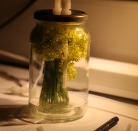 Editors' Choice January 2016, 209:1
Editors' Choice January 2016, 209:1
Ozone, VOCs, and pollinator attraction by David Ackerly, New Phytologist
Selected paper: Ozone degrades floral scent and reduces pollinator attraction to flowers.
Editors' Choice Archive 2015 (click here to show list)
 Editors' Choice December 2015, 208:4
Editors' Choice December 2015, 208:4
Photosynthetic bark by Nate G. McDowell, Editor, New Phytologist
Selected paper: The benefits of recycling: how photosynthetic bark can increase drought tolerance.
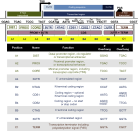 Editors' Choice October 2015, 208:1
Editors' Choice October 2015, 208:1
Plant synthetic biology by Sarah Lennon, Managing Editor, New Phytologist
Selected papers: Standards for plant synthetic biology: a common syntax for exchange of DNA parts.; An introduction to synthetic biology in plant systems :ERASynBio/OpenPlant summer school for early career researchers, September 2014.; Profile: Anne Osbourn.
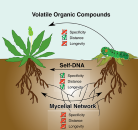 Editors' Choice August 2015, 207:3
Editors' Choice August 2015, 207:3
´Selfie´ DNA: friend or foe by Amy T. Austin, Editor, New Phytologist
Selected paper: Self-DNA: a blessing in disguise?
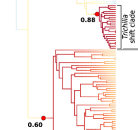 Editors' Choice July 2015, 207:2
Editors' Choice July 2015, 207:2
Rain forest radiations in the Amazon by Colin Hughes, Reto Nyffeler and Peter Linder, Guest Editors, New Phytologist
Selected paper: Recently evolved diversity and convergent radiations of rain forest mahoganies (Meliaceae) shed new light on the origins of rain forest hyperdiversity.
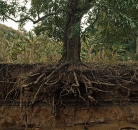 Editors' Choice June 2015, 206:4
Editors' Choice June 2015, 206:4
Root biochemistry, root traits, and soil carbon – making the links by Richard Norby, Editor, New Phytologist
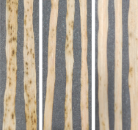 Editors' Choice April 2015, 206:2
Editors' Choice April 2015, 206:2
Septoria leaf blotch disease in wheat by Alistair Hetherington, Editor-in-Chief, and Sarah Lennon, Managing Editor, New Phytologist
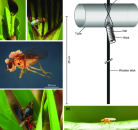 Editors' Choice April 2015, 206:1
Editors' Choice April 2015, 206:1
Chemical mimicry and Aristolochia by André Kessler, Editor New Phytologist
Selected paper: The betrayed thief – the extraordinary strategy of Aristolochia rotunda to deceive its pollinators.
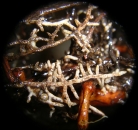 Editors’ Choice March 2015, 205:4
Editors’ Choice March 2015, 205:4
Mycorrhizal fungal community composition: host identity and ecosystem development by Maarja Öpik, Editor New Phytologist
Selected paper: Host identity is a dominant driver of mycorrhizal fungal community composition during ecosystem development.
 Editors’ Choice February 2015, 205:3
Editors’ Choice February 2015, 205:3
The New Phytologist Tansley Medal 2014 by Sarah Lennon, Managing Editor New Phytologist
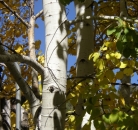 Editors’ Choice January 2015, 205:2
Editors’ Choice January 2015, 205:2
Transcriptional targeting branches out by Elena Kramer, Editor New Phytologist
Selected paper: The Populus ARBORKNOX1 homeodomain transcription factor regulates woody growth through binding to evolutionary conserved target genes of diverse function.
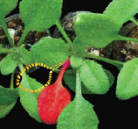 Editors' Choice: January 2015, 205:1
Editors' Choice: January 2015, 205:1
Kin recognition in plants by John Christie, Editor New Phytologist
Selected paper: Photoreceptor-mediated kin recognition in plants.
Editors' Choice Archive 2014 (click here to show list)
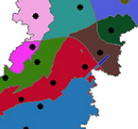 Editors’ Choice: December 2014, 204:4
Editors’ Choice: December 2014, 204:4
Land use and arbuscular mycorrhizal fungal (AMF) diversity by Maarja Öpik, Editor New Phytologist.
Selected paper: Land use influences arbuscular mycorrhizal fungal communities in the farming–pastoral ecotone of northern China.
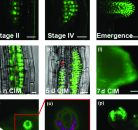 Editors’ Choice: November 2014, 204:3
Editors’ Choice: November 2014, 204:3
New clues to the molecular basis of vegetative regeneration in plants by Andrew Groover, Editor, New Phytologist.
Selected paper: Irrepressible MONOPTEROS/ARF 5 promotes de novo shoot formation.
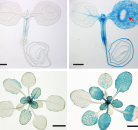 Editors' Choice: October 2014, 204:2
Editors' Choice: October 2014, 204:2
Connecting the dots in jasmonate signalling by Amy T. Austin, Editor, New Phytologist and Carlos L. Ballaré, Guest Editor, New Phytologist.
Selected paper: The squeeze cell hypothesis for the activation of jasmonate synthesis in response to wounding.

